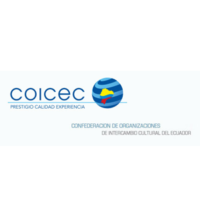4 Basic Strategies for Cross-cultural Management: Community Building
Today we start our journey into cross-cultural management – all the successful practices and initiatives regarding cultural and social inclusion in the context of international education. There are thousands of study abroad opportunities around the world and modern technology makes it ridiculously easy to research thoroughly before making a choice. In such increasingly globalised environment and with unlimited access to information, we believe that all educational institutions that strive for greatness should make cross-cultural management their top priority.

There are 4 basic strategies for cross-cultural management that we are going to introduce here over the next few days. If you’re not already familiar with all or most of them, you can start implementing some right away. Improve the daily lives of your international students and see the difference!
Community Building and Providing Space for Dialogue
Many schools and universities have great traditions of student clubs, initiatives related to various causes and community events. However, all that doesn’t necessarily mean that their international students feel inclusion. And there might be many reasons to that.
Sometimes there is a language barrier. For example, if Spanish is the predominant language on campus, a Bulgarian student may feel left out. Sometimes the barrier is a cultural one – a Brazilian student in the U.S. could get disappointed by the concept of a home dinner for Thanksgiving instead of the expected street celebrations.
On still other occasions, it’s purely about personal traits, for instance, being too shy to join a club or attend an event.
Here are just a few ideas on how you can facilitate building a community within your institution’s international students population and provide opportunities for dialogue:
A skills fair
In the beginning of each term or semester, introduce an online (or offline) board of skills to the community. Students can post their skills and interests on it, and find others that are interested in the same thing. For example, a student who is great at making sushi can teach others the basics during sushi Sundays. Two students who want to learn 3D printing can find another who already has some knowledge in the field.
Experiential learning
A great tradition on campus can do wonders. What if that tradition is about cultural learning? A local town tour organised by international students and highlighting parts of their cultures would help international students get to know the host country better. Moreover, it will give them an opportunity to share their own cultural backgrounds in a new way.
The Living Library
This is a great tool to help build intercultural understanding. It provides a space for dialogue between cultures, social standings and other points of difference. The goal of the library is both to listen and to be heard.
A World Café
This method of communication brings the best out of each participant. The idea is simple: a large group of people divide into small groups (4-5 people). They receive a topic and a certain period of time to discuss it. After the discussion, everyone presents their findings and insights. This is a great way of discussing particular topics (i.e. the refugee crisis in Europe), concepts (i.e. globalization) as well as processes (i.e. migration).
A street gallery
Another possible way to introduce different cultures to each other is through art. Visual arts will work best here, and that is why we encourage institutions to dedicate a space for such arts within campus. Street art is a great way to offer both local and international students a space for expression. Encouraging both groups to use symbols from their cultures and create art that is meaningful will not only open dialogue. It will also boost confidence in those students who are having difficulties using the local language.
What is your preferred approach to helping your international students be heard and understood? How do you facilitate community building, communication and open dialogue within your institution?
Share your experiences in the comments below!










































